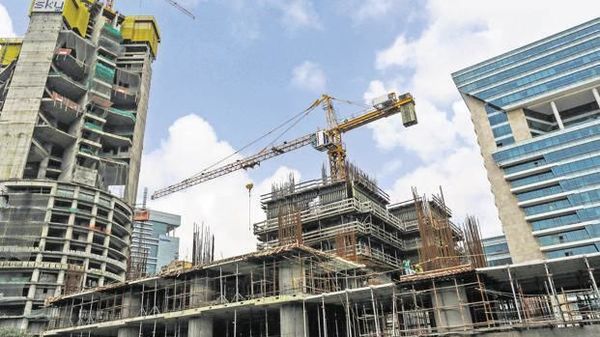

The real estate sector, which accounts for the majority of the savings of Indian households, has been notorious for malpractices such as project delays, siphoning of investors’ money, changing the layout of the projects without the consent of homebuyers, increasing the prices arbitrarily and so on. However, given the fall in demand and corrosion of homebuyers’ trust, developers are now being forced to get their act together. Here are a few factors that may help rekindle interest in the sector.
Affordable housing
The affordable segment has turned out to be the dark horse for the real estate sector. Affordable houses (worth ₹50 lakh) accounted for 55% of the sales in 2019, according to data provided by Liases Foras, a Mumbai-based real estate research firm. Moreover, Of the total launches of 269,000 units in 2019, 57% were from the affordable segment.
What’s also worked for the segment are the schemes announced by the government. Now even big developers are foraying into it. For instance, Lodha Group, a Mumbai-based premium developer, recently announced the launch of its affordable brand, Crown, which will price most units between ₹25 lakh and ₹50 lakh.
“Amid the downtrend in the last two years, affordable housing was like a saviour. With the middle class constituting 80% of Indians, the demand is huge. But the supply is limited with a handful of dedicated developers,” said Honeyy Katiyal, founder, Investors Clinic, a real estate consulting firm.
The presence of reputed developers also boosts demand. “Many customers, especially first-time buyers, get satisfaction from buying from a reputed developer,” said Gagan Randev, national director, capital markets, Colliers International India.
Developers are also offering more amenities in the affordable segment. Recently, MRG World, a Gurugram-based developer in the affordable segment, launched residential project Ultimus. “For the first time, an affordable project will have a dedicated 25,000 sq.ft area as children’s play area, along with a swimming pool that is half the Olympic pool size,” said Rajat Goel, joint managing director, MRG World.
Consolidation
Earlier, in the absence of regulation, anyone with a land bank or money could become a developer. That’s difficult in the current regulated environment which requires enhanced compliances and disclosures by developers. Also, given the tough market conditions, where even established entities are struggling to sell units, non-serious developers lacking professional capabilities are exiting the business. This is leading to consolidation in the industry.
“The number of new and upcoming builders will go down as it will be hard to find buyers in new projects,” said Katiyal.
Even as fewer new developers are expected to enter, some of the existing ones are being taken over by big builders. “A lot of projects which are financially unviable are being acquired by some of the big developers such as Godrej Properties, Mahindra Lifespace Developers and Prestige. Such moves will benefit homebuyers,” said Vikas Wadhawan, group chief financial officer, Housing.com, Makaan.com & PropTiger.com.
“The end consumer is the key beneficiary of consolidation across stakeholders, owing to implementation of Rera and other initiatives. Today, a consumer is clearly more empowered and is set to enjoy the fruits of consolidation, which will lead to standardization in quality, transparency in pricing and, most importantly, timely delivery,” said Shveta Jain, managing director, residential services, Savills India, a real estate consultancy firm.
Completed units
The biggest issue that the industry is currently grappling with is stuck or delayed projects. Around 174,000 homes are stuck across seven big India cities, according to ANAROCK Property Consultants Pvt. Ltd. Recognizing the gravity of the problem, the government recently announced the creation of a stressed fund worth ₹25,000 crore to provide last-mile funding to stuck projects.
In fact, buyers prefer ready-to-move-in properties as they don’t have the risk of delay and charge no GST. The share of ready-to-move-in properties in overall sales went up to 25% in 2019 as compared to 11% in 2014, according to data from Liases Foras.
Sensing the change, developers are focusing on completed projects. In 2019, DLF Ltd announced that it will sell units only after the completion of its projects. DLF’s ready-to-move-in luxury housing project in Gurugram , The Ultima, managed to sell about 75% of the units on the very first day. Some developers are launching projects where units are near completion.
“The year 2020 will also witness consumer confidence in projects which are completed or where significant construction has been done. Buyers are unwilling to take any risk,” said Katiyal.
“Developers now understand buyer sentiment which, to a great extent, is led by transparency and timely delivery. Another reason for the focus on execution is Rera, which is stringent about timely delivery,” said Jain.
Generally, ready-to-move in properties come at a premium over under-construction properties, but the gap is reducing. “There are multiple reasons for this. One, the developers are not increasing the prices of under-construction properties every six months or so, which used to happen earlier. Two, even new launches are happening at rationalized prices and there is hardly any organic growth,” said Jain.
Unique loans
Recently, State Bank of India came out with a unique home loan product, which guarantees to pay back the principal to the homebuyer in case the developer fails to give the possession within the promised time. The bank will monitor the progress of the project and will disburse the funds accordingly.
The product is unique as banks have never given such a guarantee. In fact, in the past, some financial institutions issued loans without ensuring that the developer had the necessary approvals. With such a product, the bank will do their own due diligence.
This is basically a trust building exercise, said experts. “By launching this product, SBI will be demonstrating its confidence in certain developers and projects and also give homebuyers the confidence to look at such projects,” said Randev.
Given the fact that the sector is unlikely to see any uptake in terms of prices in the near future, this is a good time to buy a house for end use. But evaluate the options carefully. In case you are considering investing, remember that real estate is not a liquid investment and is unlikely to see any significant price gains in the near future.
[“source=livemint”]




